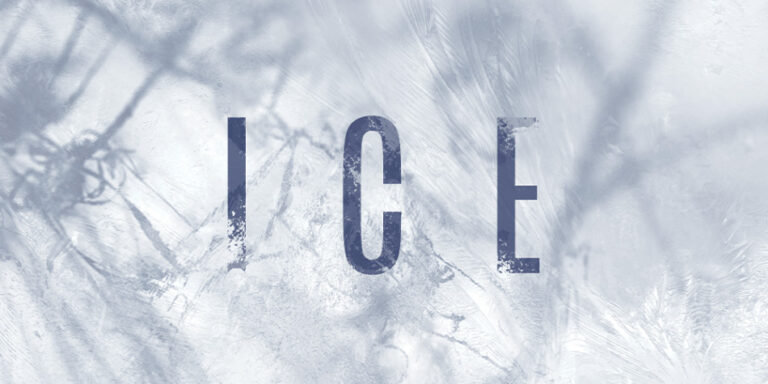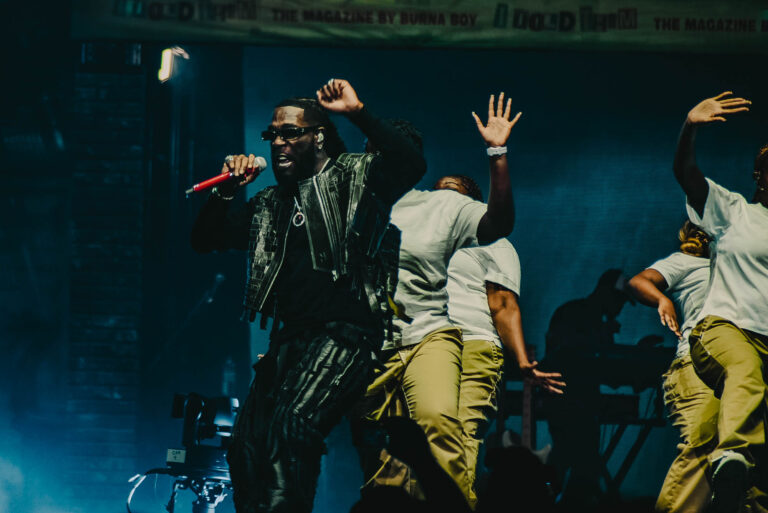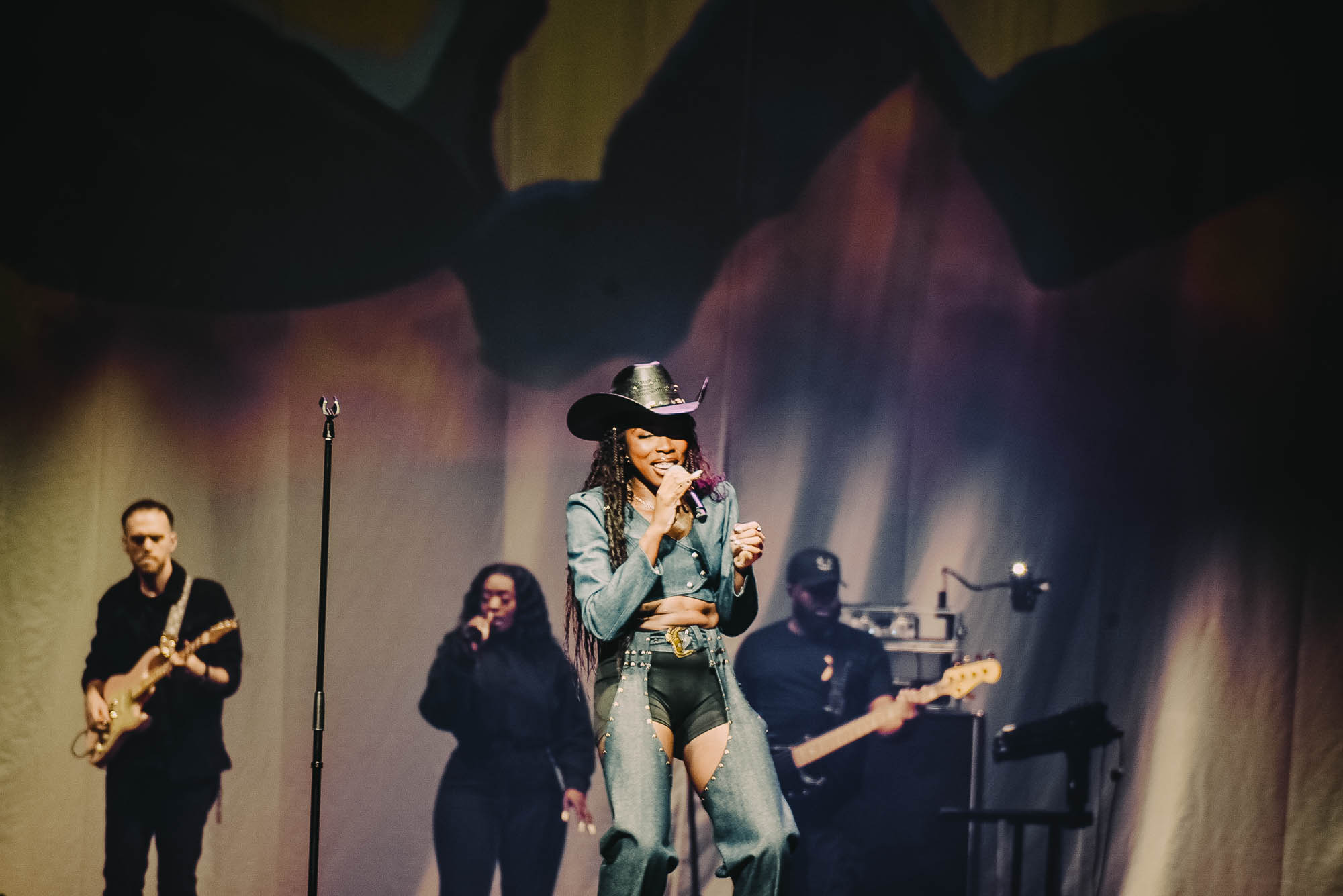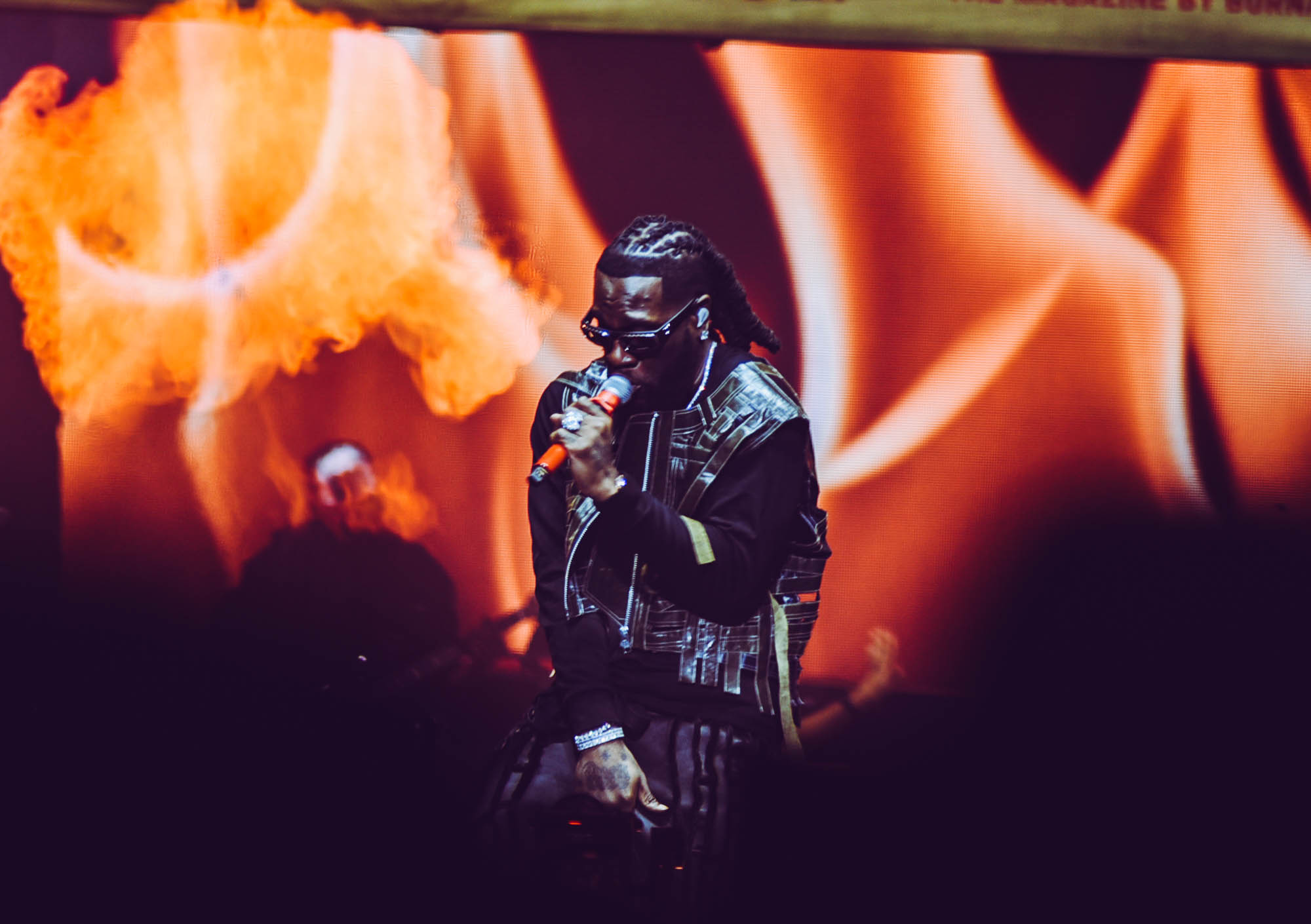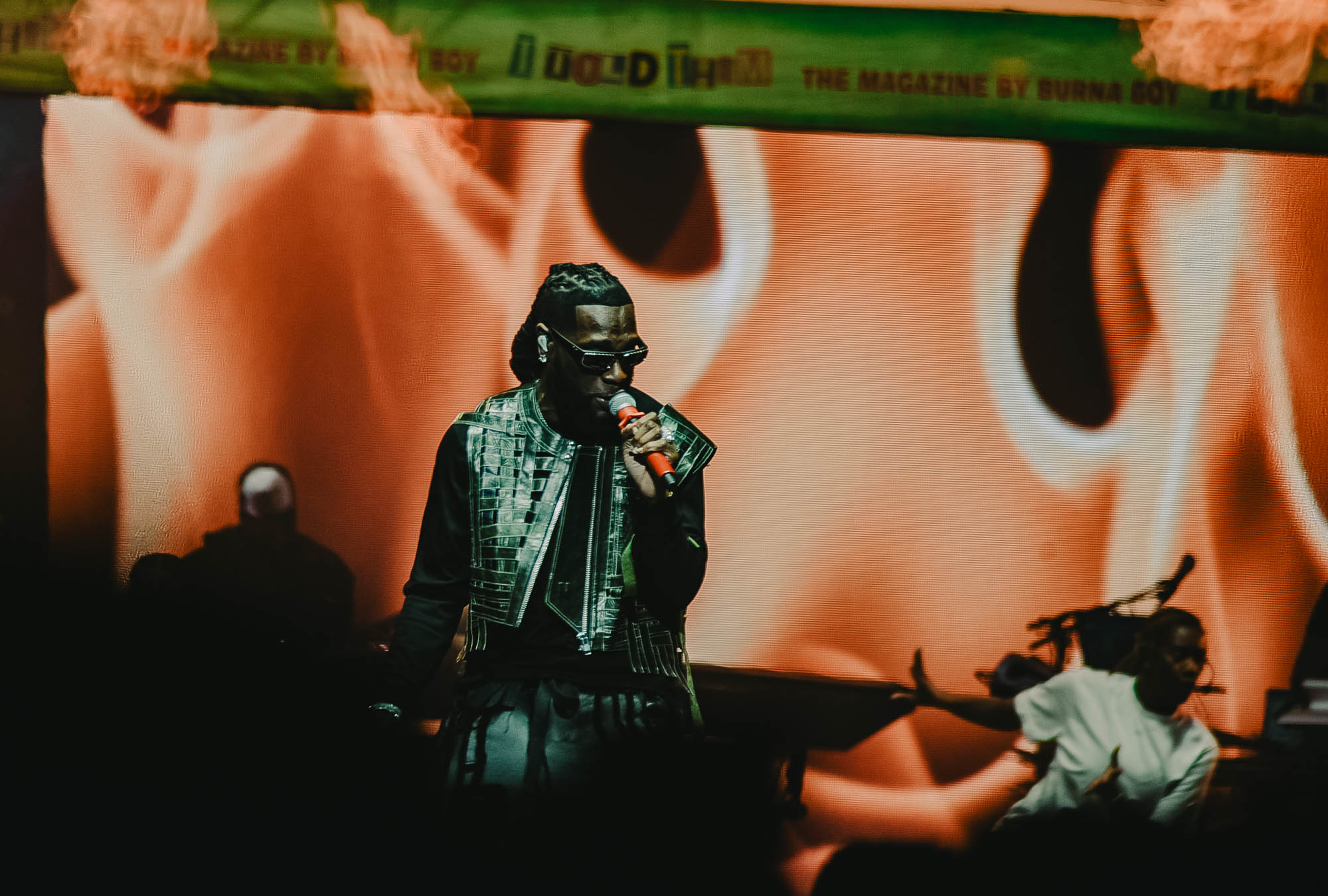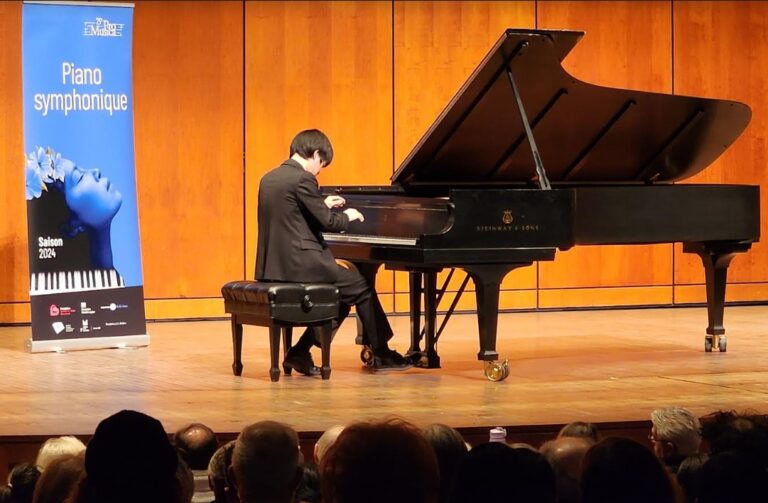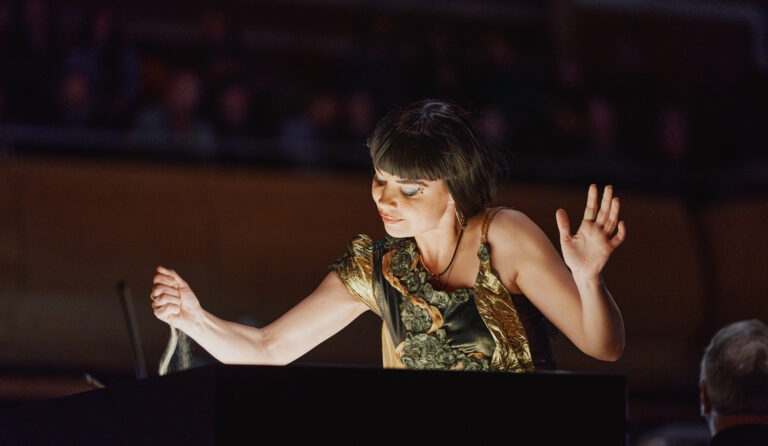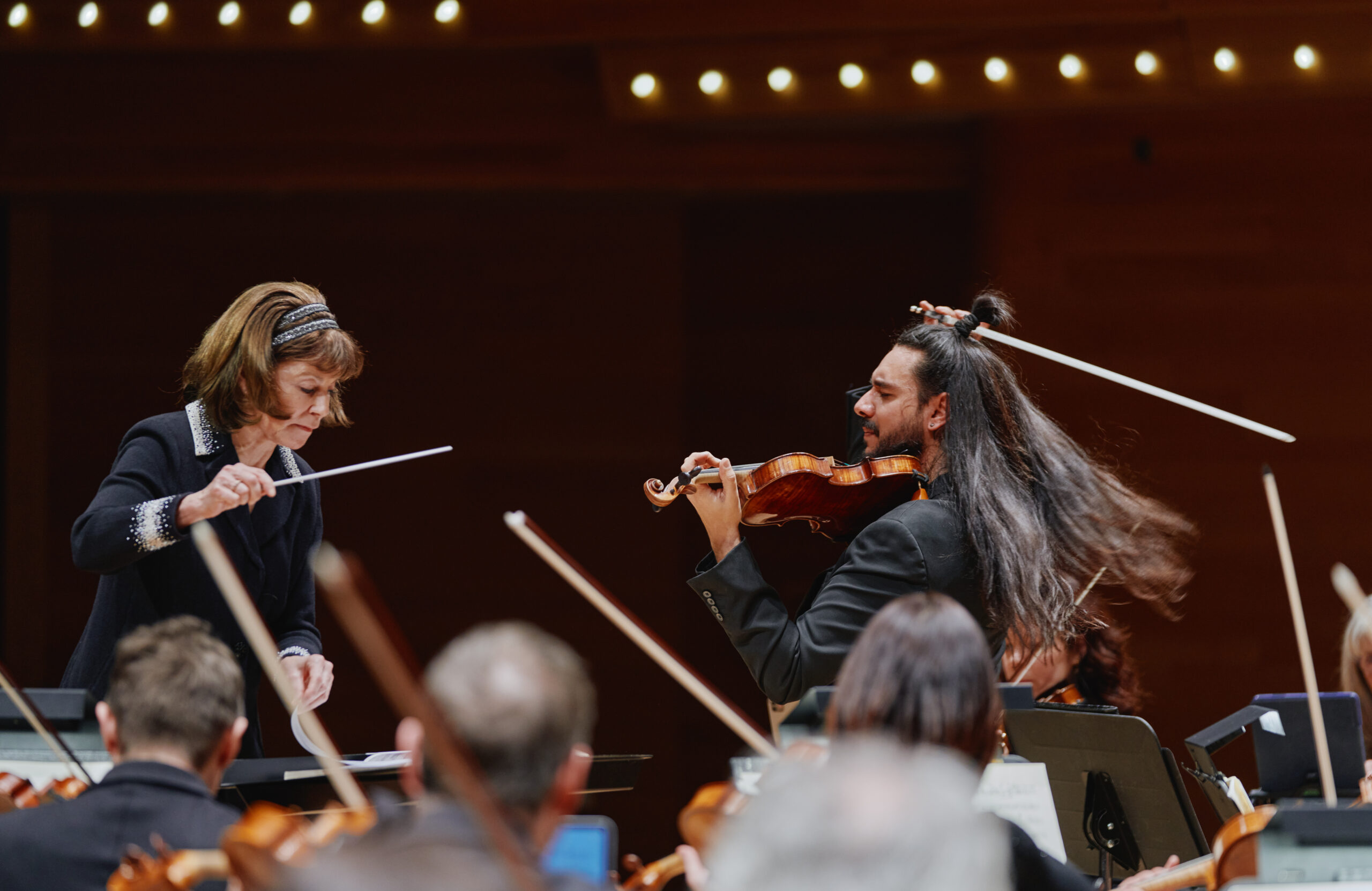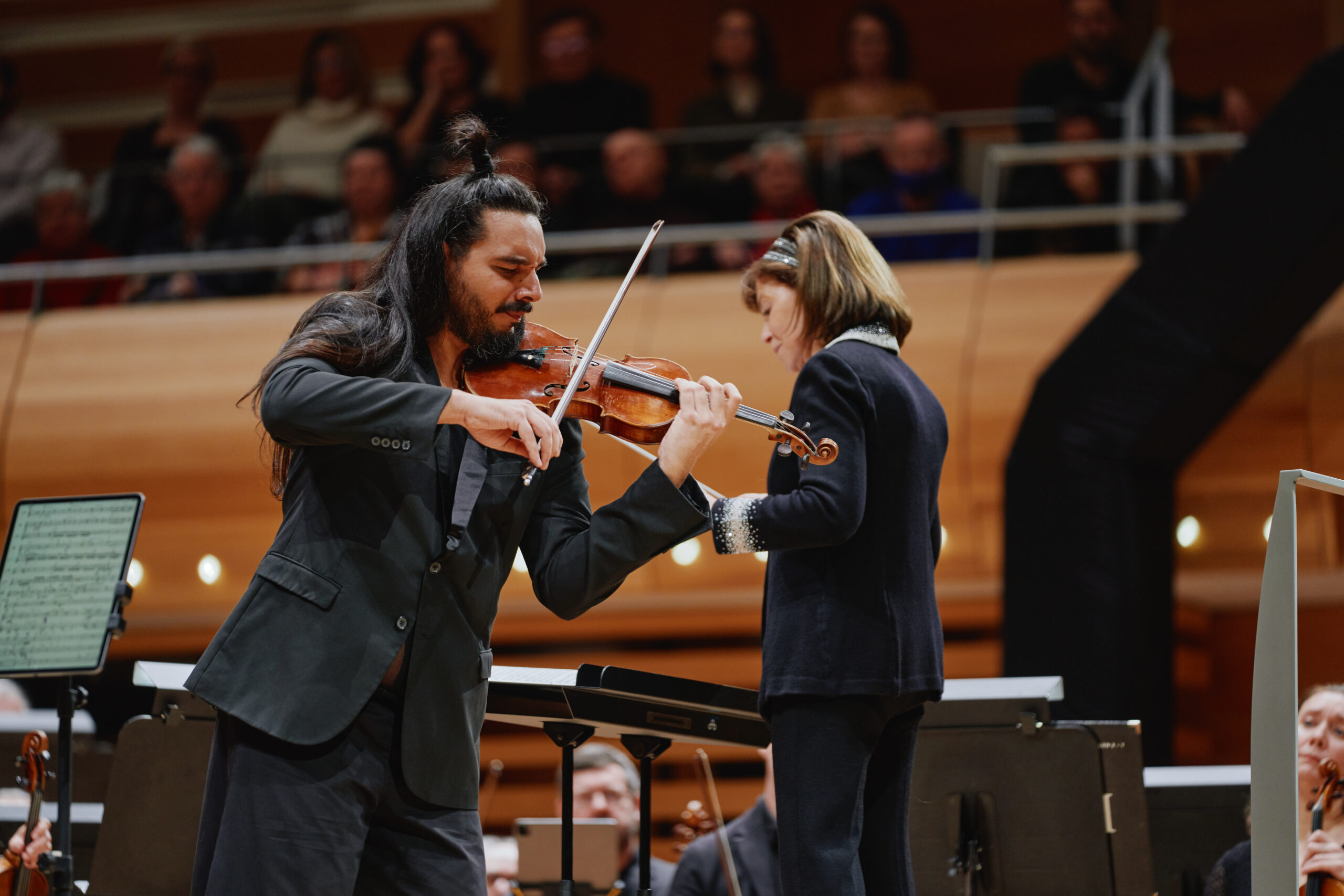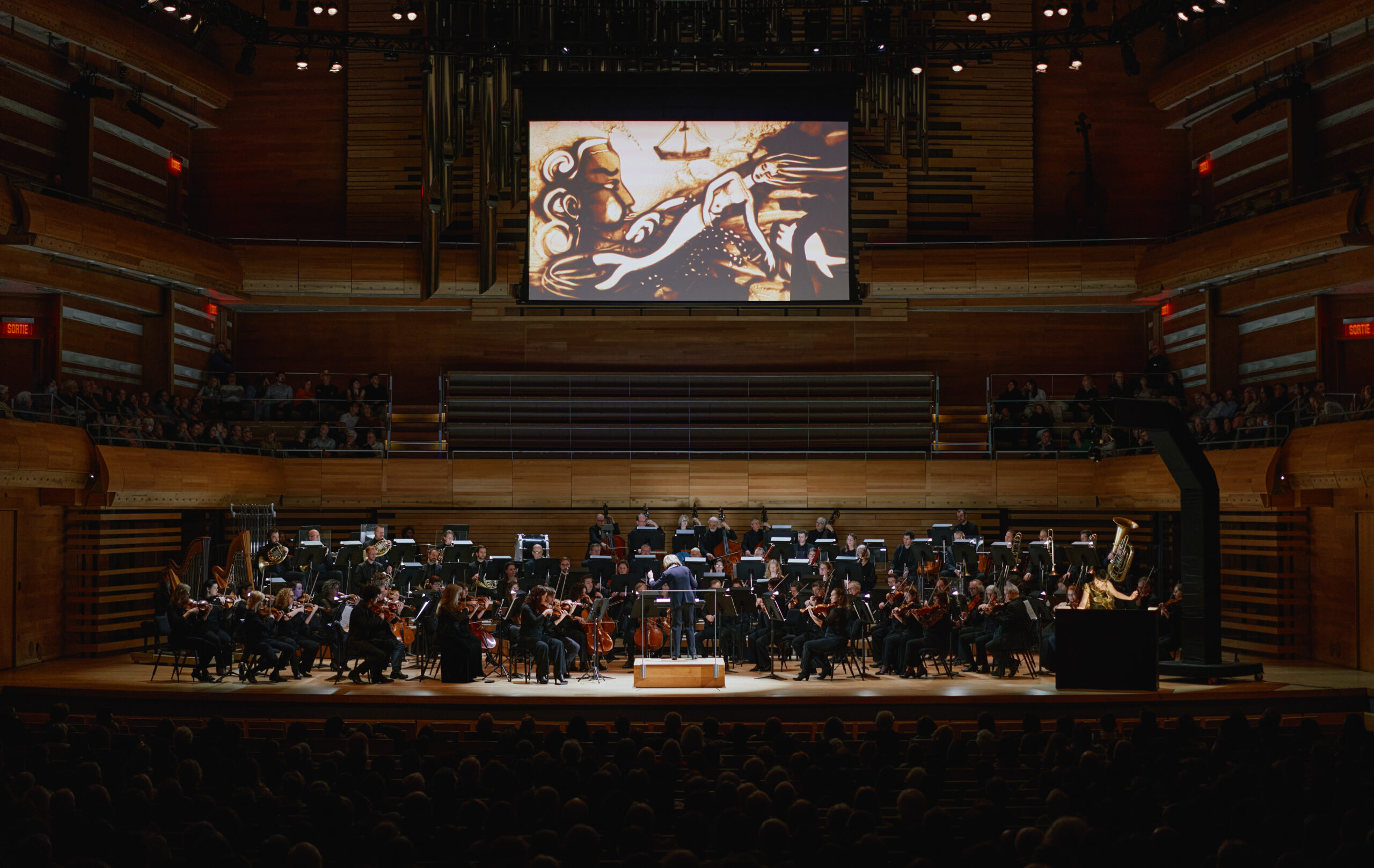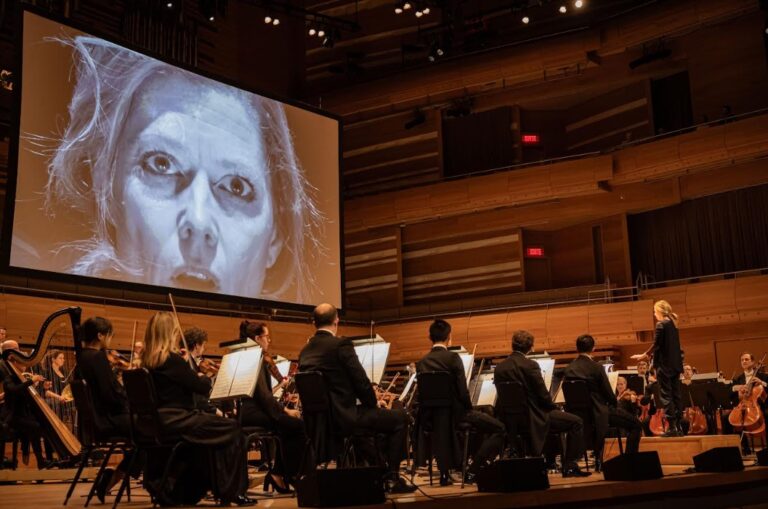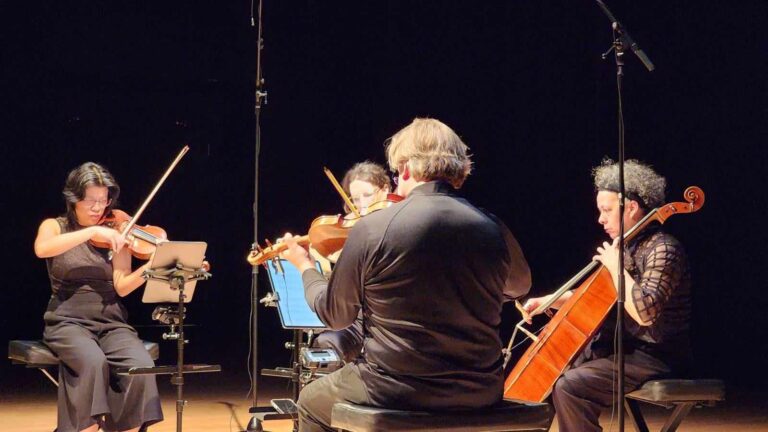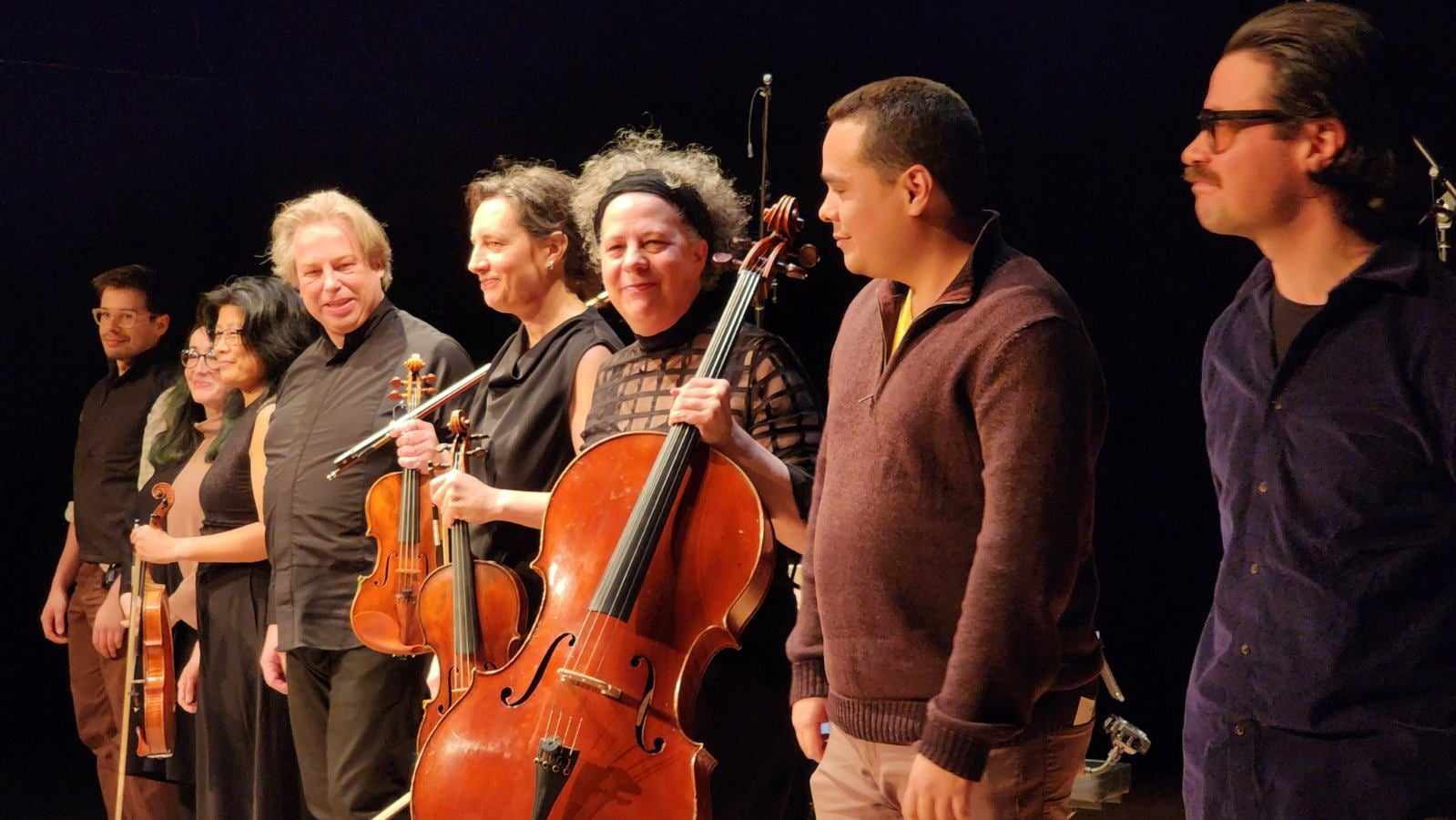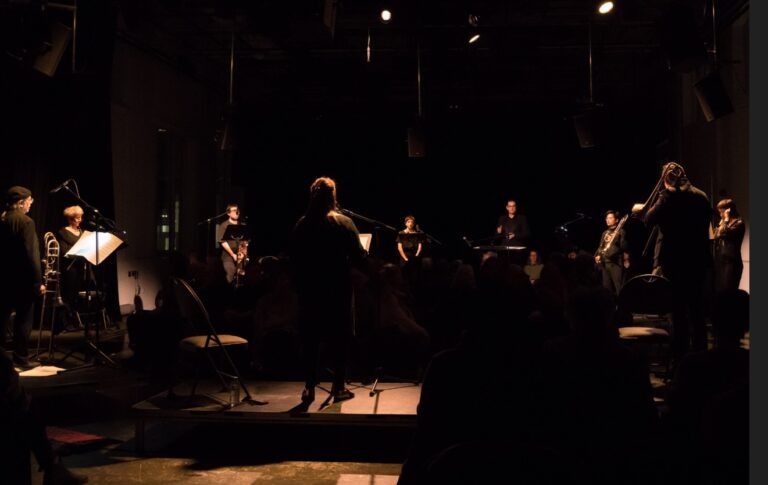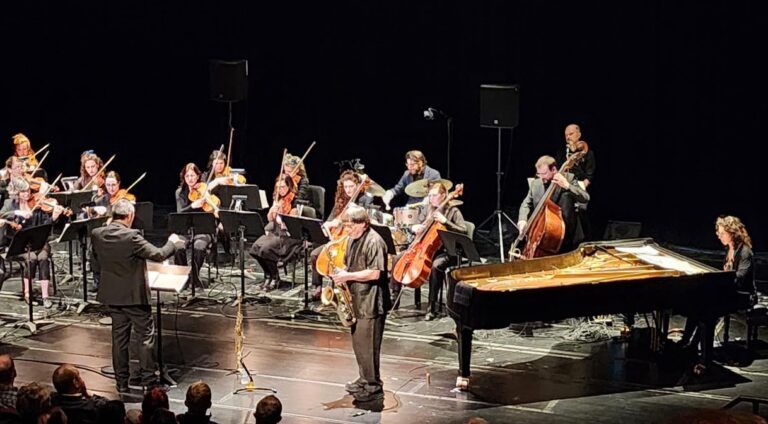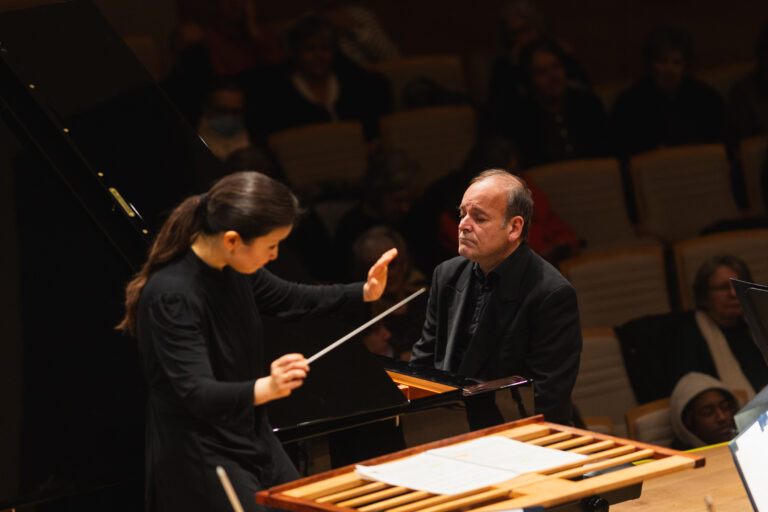Saturday evening at the Centre PHI featured an immersive, contemplative concert presented by the Paramirabo ensemble. The program focused on three works by Quebec composer Jimmie Leblanc, which flowed together to create an intimate atmosphere. All in all, a very successful concert, with both visual and aural highlights.
From the moment we entered the hall, we could feel the desire to immerse the audience in the work, as Jimmie Leblanc spoke of in an interview with PAN M 360 earlier this week. The small room set up for the occasion at the Centre PHI is admittedly cramped, and we’re very close to our neighbours, but this contributes to our feeling of connection between members of the audience, but also with the artists. By literally sitting inside the art installation, we really feel part of the performance.
The first piece, …and the flesh was made word. has a very joyful, dynamic energy about it. There’s a sense of anticipation, as if something is in the making as if we’re witnessing the creation of something new. The work is rhythmic, guided by a single note repeated with relentless regularity on the piano. To this single note are added more or less dissonant chords. The next piece, Clamors of Being, follows on almost imperceptibly: a change in lighting and a change in the repeated note on the piano are the only means of realizing that we are in the second half of the concert.
It’s easy to see how the two works are related, with the latter complementing the former. Here, the melodic lines are more dynamic, with rapid arpeggios shared between piano and wind instruments. There’s a great lightness and delicacy to this work. You feel like you’re floating, guided by the swirling melodies. What these first two works have in common is the relentlessly repeated note, which acts as an anchor and landmark on which the entire score can be built.
The transition to the title piece, Ice, is unfortunately not without its pitfalls. We think we understand a technical problem, with technicians moving quickly around the hall and stage. Despite this, we try to keep the audience in the contemplative, immersive atmosphere that had been so well established. Pianist Palema Reimer and percussionist Krystina Marcoux continue to create a light soundscape, to avoid creating a cut in the sequence of the program and still enliven this moment of transition, of floating.
The program resumes under the direction of Cristian Gort for the piece Ice, born of a collaboration between Jimmie Leblanc, artist Fareena Chanda and physicist Stephen Morris. The audience is seated inside three metallic fabric curtains, onto which Fareena Chanda’s work is projected, while the Paramirabo ensemble musically evokes the formation of ice. In this work, too, the piano comes to the fore with a magnificent, highly melodic score. The piece is punctuated here and there by chords full of friction and dissonance. The mood is peaceful, contemplative and truly immersive. Throughout the evening, the performers’ playing is precise, in perfect cohesion. The challenge of immersion has been met.
It will be possible to experience the installation on Sunday, March 10 at the Centre PHI between 12.30 and 5.30 p.m., for free.
To find out all about the program for the Semaine du Neuf at Le Vivier, click HERE!
